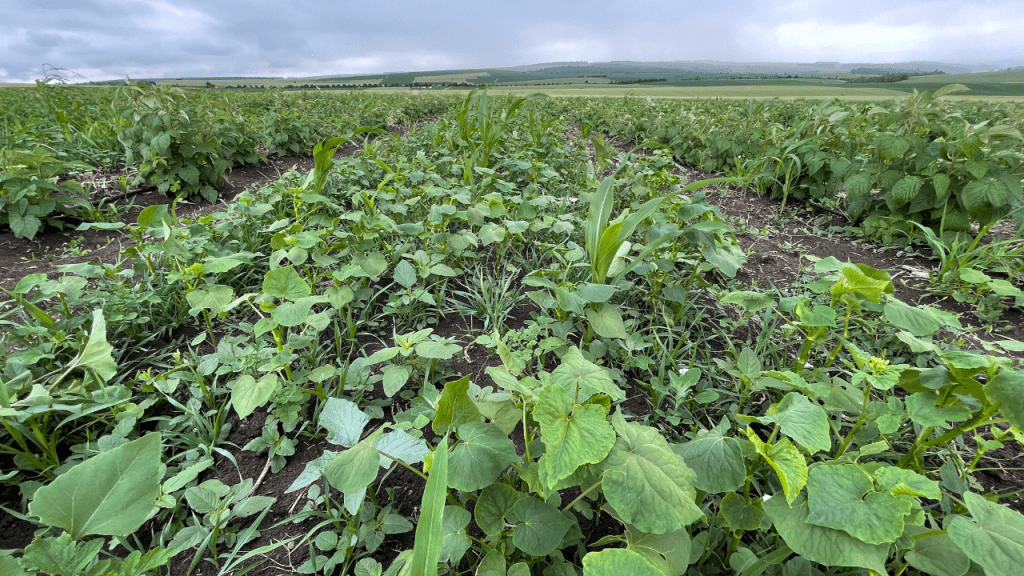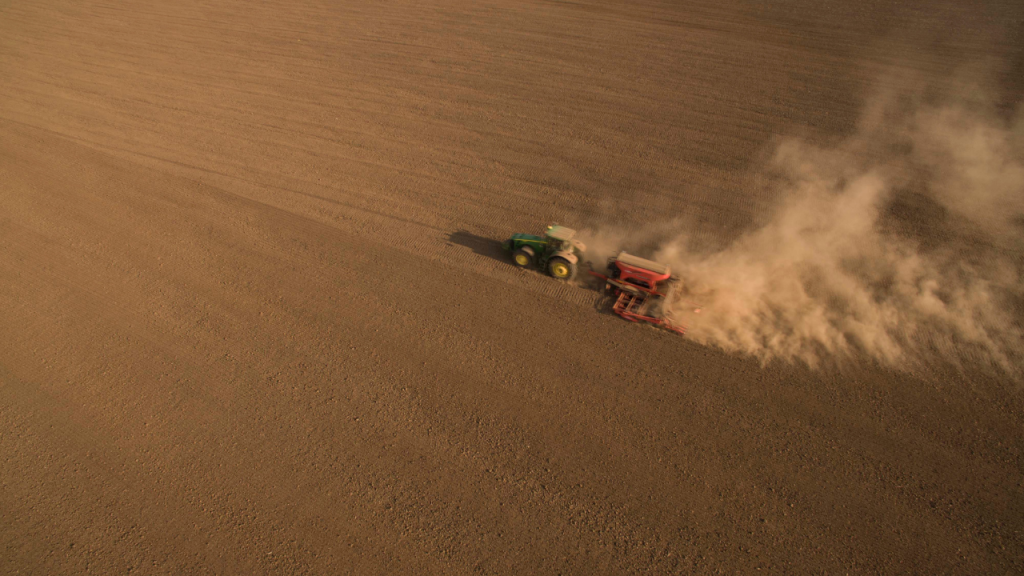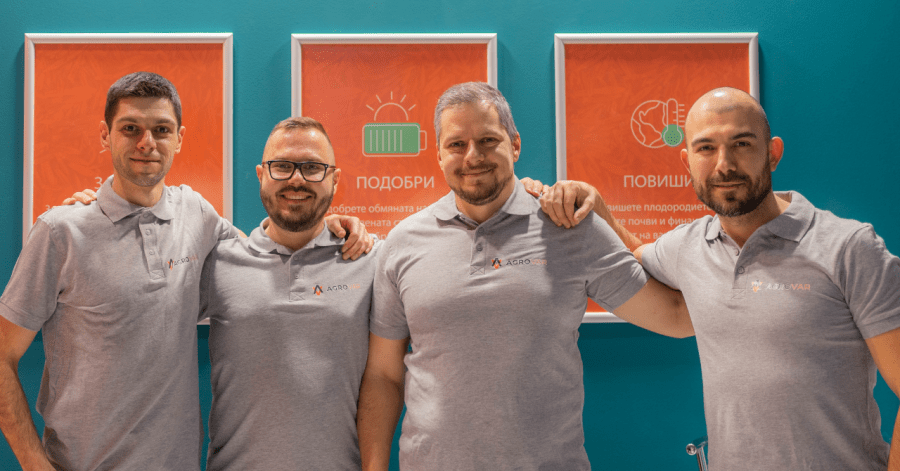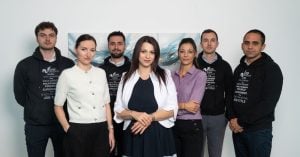“The Agricultural Revolution was history’s biggest fraud. Who was responsible? Neither kings, nor priests, nor merchants. The culprits were a handful of plant species, including wheat, rice and potatoes. These plants domesticated Homo Sapiens, rather than vice versa.” ― Yuval Noah Harari, Sapiens: A Brief History of Humankind
Agriculture is one of the sectors where dependency on nature’s ecosystem services is visible with the naked eye. Yet in Europe, scientists expect the negative impacts of climate change to lead to decreases in crop and livestock production, and even abandonment in parts of Southern Europe, due to extreme events like heat waves, droughts, and floods. For a region such as Southeast Europe where the potential for economic output from agriculture is high but the share of GDP is actually decreasing, a transition to sustainable agriculture can be a deal breaker.
Yet despite regulatory push and corporate pledges of carbon neutrality in the agrifood sector, there’s still a big disconnect. The farm level. Do farmers receive the practical guidance they require to switch to more climate-friendly farming practices? Are we driving enough awareness around practices such as regenerative agriculture and permaculture, and how they can support soil health? Are we giving farmers the solutions to make this transition, while gaining a stable income?
The Recursive talked to Konstantin Haralampiev, co-founder of AgrovarCC, a Southeast European agritech startup determined to educate farmers about the benefits of regenerative agriculture and empower them with the tools to maintain a healthy soil for a healthy crop yield.
Regenerative agriculture in a nutshell

Farming is an ancient practice. While its modernization has brought a lot of benefits, it has also been pushed aggressively, from a profits-first angle.
The excessive use of machines and practices such as monocropping, which treat the land as an industrial machine have often left the soil barren of its nutritious organic matter content and natural biodiversity.
Exhausted and damaged soil, in turn, loses its capacity to retain and sequester carbon dioxide (which instead is left to accumulate as a greenhouse gas), prevent erosion, as well as to grow healthy and resilient crops.
Regenerative agriculture brings together agricultural practices whose first objective is to restore or preserve soil quality and productivity. For a soil that was subject to excessive conventional agriculture, this means reviving its astonishing biodiversity and organic matter content.
Here are some of the principles that regenerative agriculture recommends:
• Adapt practices to the local content: economic, social, ecological;
• Minimize disturbances, such as tillage, fertilizers, pesticides;
• Provide an armor to the soil, so that it is never left barren and exposed to harmful elements;
• Enhance biodiversity by planting diverse multi-species cover crops, integrating insects and animals, and rotating crops, among others.
Stewarding the land with the goal to regenerate its natural qualities can be done effectively with a mix of ancient farming traditions and modern research and agritech innovations.
Blending tradition with agritech innovation
“Soil is like water, like forests, its nutrient content goes down if not treated properly, and this has an impact on the climate. For so many years, we haven’t realized that soil is a depleting resource. Soil health has been neglected as people have focused on larger yields and bigger profits,” Konstantin Haralampiev tells me.
It’s this understanding, imparted by his co-founder, Boris Koev, who operates a big family farm in Ruse, Bulgaria, that convinced him to start an agritech business.
The two business partners started exploring the market’s potential, looking for a niche where they could provide a useful solution. Having a farmer on the team meant they were already up to speed with the latest agriculture technologies and tools available to farmers.
That’s how they arrived at cover cropping. The practice refers to covering the soil between the main crops with different plants that can bring different benefits to the soil. Cover crops can reduce erosion, help water absorption and nutrient intake, as well as control pests by encouraging the appearance of predator populations instead of using pesticides.
But soil needs vary. Regenerative agriculture starts with recognizing the importance of context. To be beneficial, cover crops must be tailored to the soil’s particular needs.
AgrovarCC targets this need with an AI-based software, which uses soil analysis data to determine the exact deficiencies and problems of the soil in a selected land. The tool also inputs historical climate data and information from the local farming practices, from what machines are operated to what fertilizers are used. After it computes all this data, the software gives a specific recommendation of a cover crop mixture that will enhance the soil quality.
To meet the demand for crops, the two business partners also launched a subsidiary business, Carbon Crops, through which they produce and sell the seeds.
“We did this ourselves because we want to control the quality of the seeds. If we do the recommendation and then the farmer buys the seeds from a warehouse where they’ve been sitting for a couple of years, we cannot guarantee the results anymore,” Konstantin shares.
So far, they have been working with around 30 farms of approximately 40K hectares. Through the seed business, they are growing15 species of cover crops that can be combined depending on the needs of the farm. To sell their product, they also started collaborations with two distributor companies in Bulgaria.
In 2021, the agritech startup received a pre-seed investment of 200K euros from Vitosha VC. This has helped them develop the product, test it, and gain some initial traction. Now, they are getting ready to launch it.
But the plans don’t stop here. They aim to build more digital agritech products focused on soil health. One of the goals is to create a database of the actual effects of cover crops on different types of soil.
“We want to build a Phytotron, a growth chamber where we can imitate different climate conditions and test how cover crops affect different types of soils in these conditions. All the acquired data will be fed into the software to result in personalized recommendations,” he says.
Another project they plan to start next year is a carbon credit program, similar to what France-based Soil Capital or US-based Indigo Agriculture are doing. The company is already collecting lots of data about farming practices, soil quality, and carbon impact, which can be used to create a baseline for carbon credits. For instance, if a farmer changes his practices towards a positive carbon impact, such a system would calculate the change, certify it, and reward a certain amount of credits, which can then be bought by other farmers.
“We’re going to do it the old school way with science and research behind it. It will take some time but we want to do something for farmers in Southeastern Europe because at the moment they are the most underserved in all of Europe,” Konstantin adds.
To fuel all these development plans, the agritech company will be looking to raise new funds at the beginning of next year.
The need for training on the ground

In the EU, the European Commission is pushing for sustainability in agriculture through a policy framework. Yet education and training on the ground are still low. Programs such as The Regenerative Agriculture Revolution run by EIT Food in Spain, Portugal, Italy, and Poland are a step in the right direction, but other regions are still largely neglected.
“When we talk to the farmers, nothing comes down to them. There’s no context to regulations and no clarity to what they should do,” Konstantin tells us.
The AgrovarCC co-founders took a personal approach. They do a lot of farm visits, talk to the farmers about the state of soil, about why there are signs of desertification in even the most fertile lands in Bulgaria, and how regenerative practices could help restore soil health.
Although it’s generally the younger farmers who respond more proactively, Konstantin shares that all farmers end up understanding what the problem is and how better soil health could solve it. Online, they create educational content for both their website and agrifood publications. It’s firstly a matter of communication.
The other challenge is that making a change and seeing the result takes time. In agriculture, trial and error takes a year. But by the next year, things have changed further, so you need to keep adapting and experimenting.
“We are now part of one of the biggest initiatives launched after the COP21 Paris Agreement, 4 per 1000. It’s a space for exchanging information regenerative agriculture and food security, and for collaborating on projects. We try to join as many organizations like that as possible to keep ourselves up to date and share the know-how further.”
. . .








